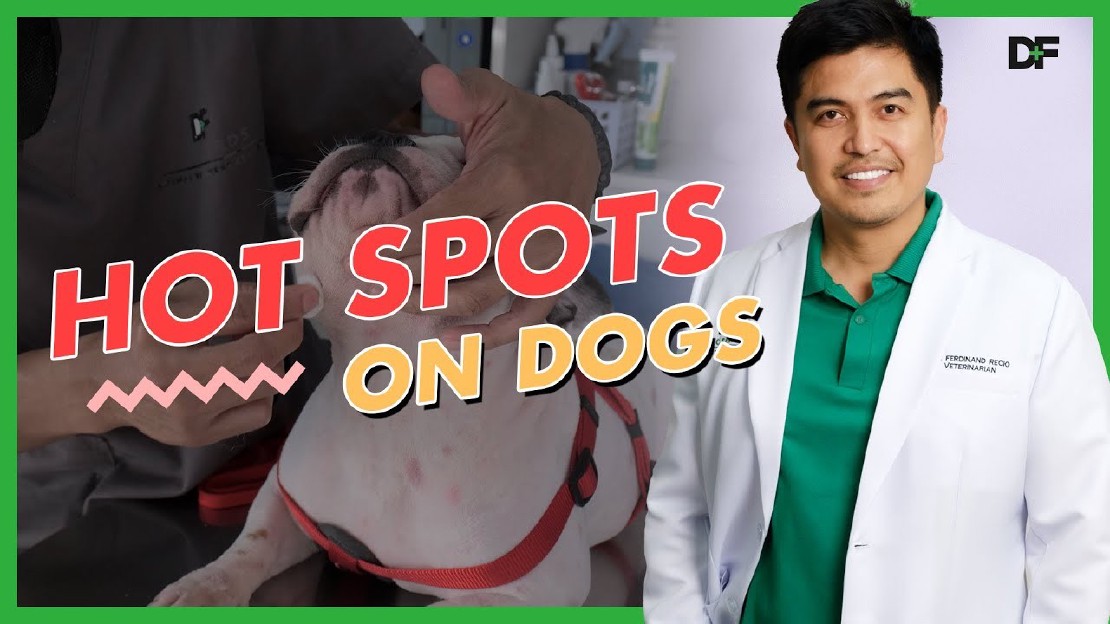Reasons why your dog has stopped drinking water
Why has my dog stopped drinking water? Water is an essential part of your dog’s health and well-being. However, if you notice that your dog has …
Read Article
Hotspots, also known as acute moist dermatitis, are a common skin condition that affects dogs. These painful and itchy sores can be a source of discomfort for our furry friends and cause them to scratch, lick, or bite at the affected area, leading to further irritation and infection.
There are several factors that can contribute to the development of hotspots in dogs. One of the primary causes is allergies, such as food allergies or environmental allergens like pollen or dust mites. When a dog is exposed to an allergen, it can trigger an immune response that results in intense itching and irritation, eventually leading to the formation of hotspots.
Poor grooming habits can also play a role in the development of hotspots. Dogs with long or dense coats are more prone to hotspots, as their hair can trap moisture and create the perfect environment for bacterial overgrowth. Additionally, excessive scratching or biting at the skin can break the skin’s barrier, making it more susceptible to infection.
So, how can we prevent and treat hotspots in dogs? The first step is to address the underlying cause. If allergies are identified as the culprit, a veterinarian may recommend an elimination diet or prescribe medication to manage the dog’s symptoms. Regular grooming and maintaining a hygienic environment are also crucial in preventing hotspots.
Once a hotspot has developed, prompt treatment is necessary to alleviate the dog’s discomfort and prevent further complications. This may involve cleaning the affected area with a mild antiseptic solution, applying topical creams or ointments to soothe the skin, and, in severe cases, administering antibiotics to fight off any infection. In some instances, a protective collar or bandage may be necessary to prevent the dog from exacerbating the hotspot through scratching or biting.
By understanding the causes of hotspots in dogs and taking proactive measures to prevent and treat them, we can ensure our four-legged companions live a happy and itch-free life.
Hotspots, also known as acute moist dermatitis, are irritated and inflamed areas of skin that can occur in dogs. These hotspots can be caused by various factors, including:
If your dog is experiencing frequent hotspots, it is important to identify and address the underlying cause. Working with a veterinarian can help determine the specific cause of your dog’s hotspots and develop a treatment plan to alleviate symptoms and prevent future occurrences.
To effectively treat hotspots in dogs, it is important to identify and address the underlying cause. This can often be done with the help of a veterinarian. Once the cause is determined, the following solutions can help alleviate the hotspots:
Remember, proper diagnosis and treatment by a veterinarian are essential for effectively managing hotspots in dogs. By addressing the underlying cause and following the appropriate solutions, you can help your furry friend find relief and prevent future occurrences of hotspots.
Hotspots in dogs, also known as acute moist dermatitis, are areas of the skin that become inflamed, red, and extremely itchy. They often appear as large, moist, and oozing lesions. Hotspots are typically caused by irritation or allergies and can quickly worsen if left untreated.
Hotspots in dogs can be caused by a variety of factors. Some of the common causes include allergies to food or environmental triggers, fleas or other parasites, poor grooming, skin infections, damaged skin due to excessive scratching or licking, and stress or anxiety. Identifying and addressing the underlying cause is crucial for effective treatment and prevention.
If your dog develops a hotspot, it’s important to seek veterinary care as soon as possible. Your vet can properly diagnose the underlying cause and provide the appropriate treatment, which may include cleaning the affected area, prescribing medication such as antibiotics or anti-inflammatory drugs, and recommending changes to your dog’s diet or environment. It’s essential to prevent your dog from further aggravating the hotspot by keeping them from scratching or licking the area.
Why has my dog stopped drinking water? Water is an essential part of your dog’s health and well-being. However, if you notice that your dog has …
Read ArticleWhy has my dog started snarling at other dogs? It can be quite alarming when your normally friendly and well-behaved dog suddenly starts snarling at …
Read ArticleWhy is my dog pooping clear gel? Seeing your dog poop clear gel can be a cause for concern, and you may be wondering what could be causing this …
Read ArticleWhy is the bush dog endangered? The bush dog, also known as the Savannah dog or the vineyard dog, is a small and elusive mammal native to the forests …
Read ArticleWill lettuce hurt my dog? Dogs are known for their love of food and their ability to eat almost anything. However, when it comes to certain types of …
Read ArticleWhen can puppies leave the whelping box? Deciding when to separate puppies from their mother and the whelping box is a crucial decision that every …
Read Article